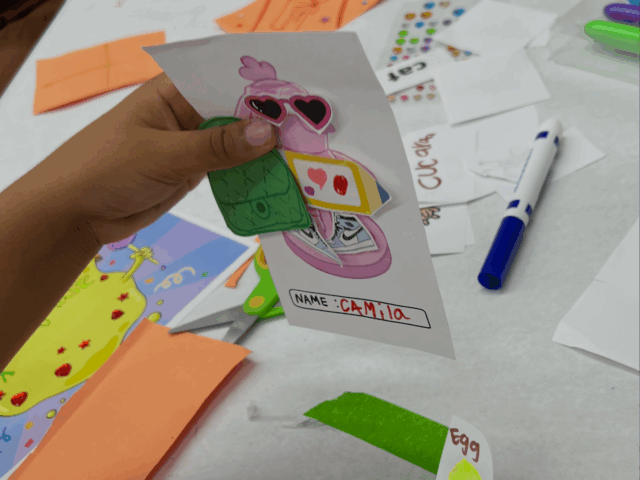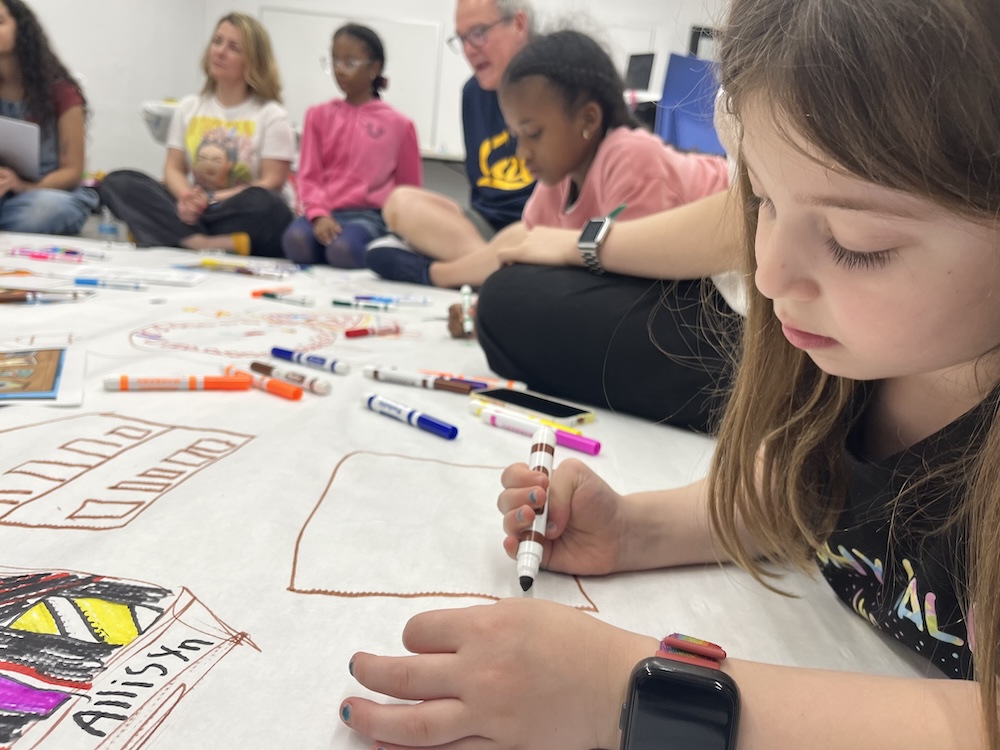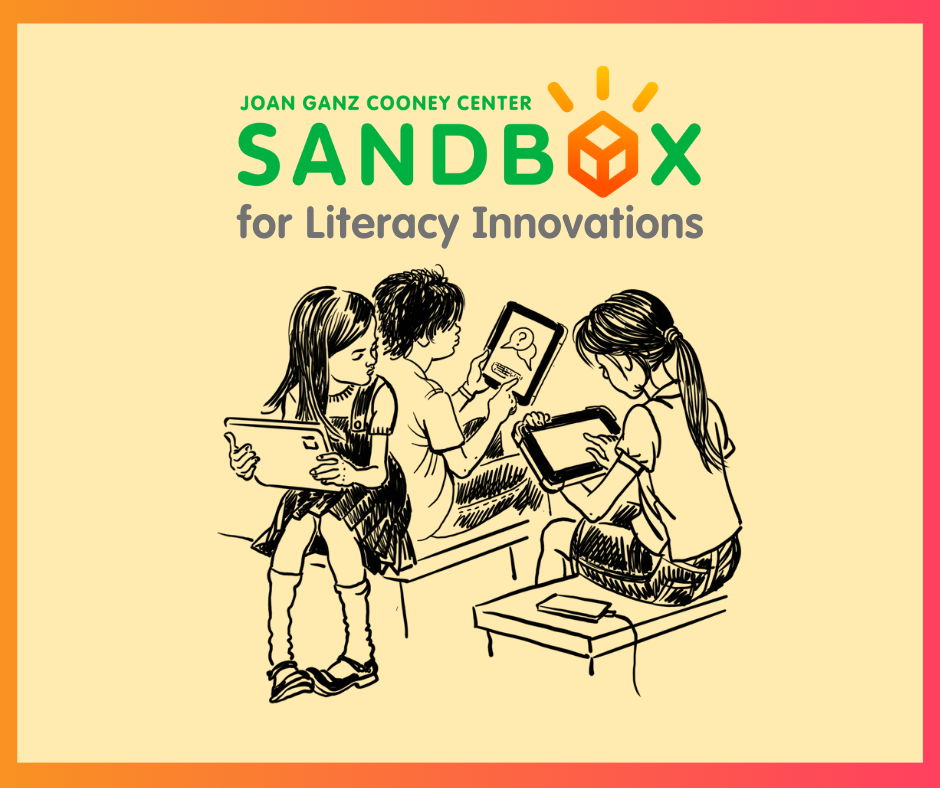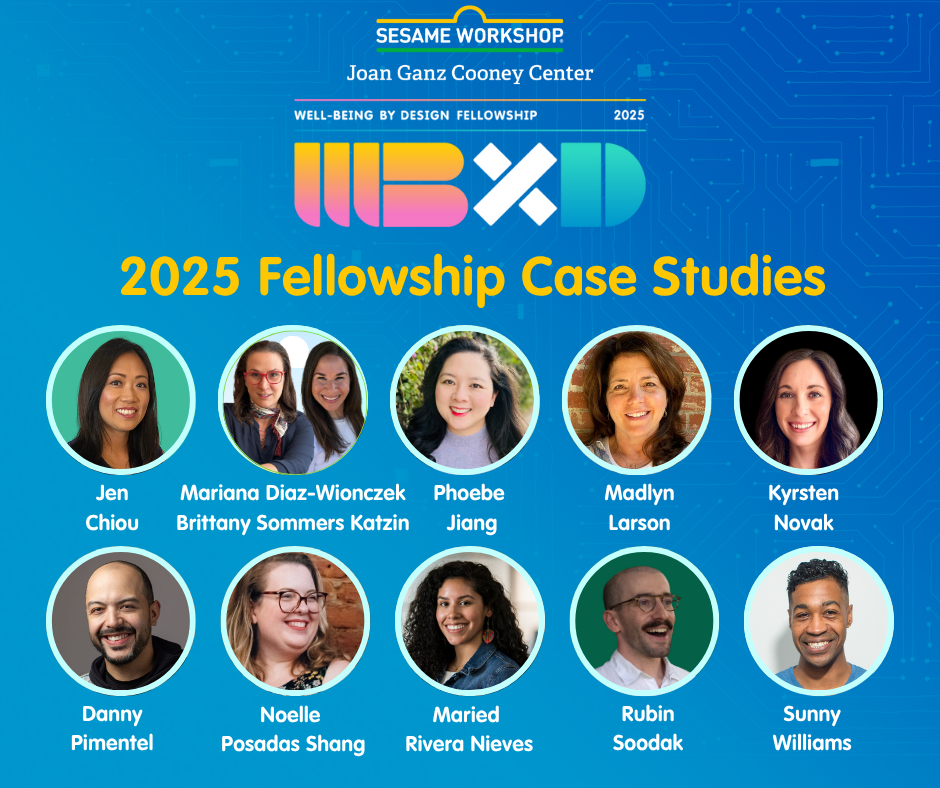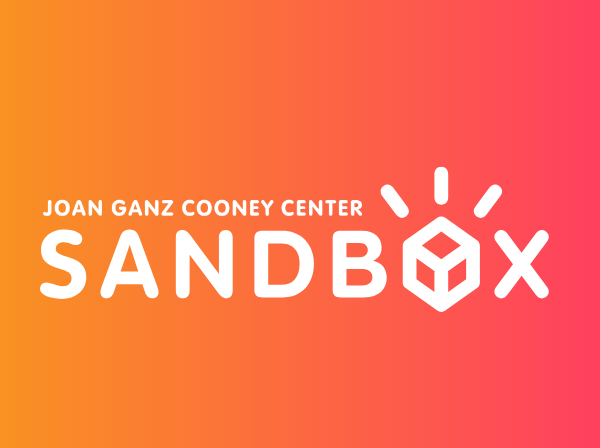
The Joan Ganz Cooney Center with support from the Walton Family Foundation, is excited to announce a three-year initiative with a simple, yet profound goal: ensuring that the needs and perspectives of children from diverse backgrounds drive educational technology products development for use at home or in school.
The Cooney Center Sandbox aims to reshape an edtech marketplace that is booming in the financial sense—with U.S. school districts spending more than $40 billion annually on apps and software—but lacking evidence of a meaningful learning return on all that investment. Despite all the new technology flooding into America’s classrooms, student achievement has stagnated or fallen across the academic spectrum, with persistent learning gaps widening since the Covid pandemic.
While edtech is sold as a solution offering personalized support to students at scale, far too few of these new tools have a solid foundation in the science of child development and learning. Just as importantly, the subset of edtech products that have proven their impact in pilot studies often fail to engage and motivate more than a fraction of kids, especially struggling students who need help the most. To bridge these gaps, the Sandbox team will link edtech developers with learning science research and expertise, and they will also recruit a diverse range of children who will co-design their products. The goal is for Sandbox to arm edtech founders and developers with a powerful new tool—the ability to combine research with the perspective and unique insights of kids to create more engaging and effective edtech.
These co-design sessions will be much deeper than “playtesting,” a method that elicits feedback on almost-finished products when only smaller adjustments are possible. The Sandbox will instead aim to create ongoing collaboration between edtech companies and children at a much earlier stage of product development.
“A lot of edtech companies work with kids in some way. But co-design is a completely different way to engage with kids, as full-fledged design partners,” noted Medha Tare, the Cooney Center’s senior director of research.
In the coming months, the Cooney Center will announce the first industry partners that will join Sandbox for its first year. They plan to collaborate with between 20 and 30 edtech developers over the next three years, to support a range of literacy skills in children, including their confidence and motivation to read and write both in the classroom and beyond.
The expansion of the Sandbox initiative follows the Cooney Center’s successful pilot phase, in part supported by the Walton Family Foundation, with edtech developers including Reading Reimagined, a project of the Advanced Education Research and Development Fund (AERDF), Mrs. Wordsmith, OKO, and the Scratch Foundation.
According to Walton education program officer Michele Leardo, the pilot bolstered “our hypothesis that including educator voice, student voice, and the perspective of child development experts will create better edtech that can accelerate student learning and support teachers in the classroom.”
The next three years of Sandbox partnerships will further test and refine that hypothesis, she said, and hopefully inform a new model of edtech quality for industry to emulate and school districts to demand. Participating companies will work with Cooney Center consultants to infuse early-stage products with research-based approaches to literacy development, co-design with children, and designing for the whole child. This project will track the uptake of design choices and product performance in the classroom or at home.
According to the Cooney Center’s executive director, Michael Preston, the Sandbox will serve as a child-centered product incubator that gives select edtech companies the time, resources, and support to make the early, high-leverage design choices that will set their products up to be more effective and engaging for learners.
“At these early stages, there are all these pressures on developers—including time and money—to hurry up and get something out on the market,” he said. “We want them to pause long enough take this child-centric approach, and understand that this extra time and investment will be well worth it in the long run, both in terms of learning impact and business success.”
Targeting a Literacy Crisis
This innovative approach could be applied to a wide range of learning products and interventions, but the Walton Family Foundation and the Cooney Center chose to focus on literacy to leverage their learning expertise and create a deeper pool of shared co-design insights from the Sandbox partnerships. The data clearly shows that America has a reading problem. According to the most recent (2024) National Assessment of Education Progress (NAEP), commonly referred to as, “the nation’s report card,” only 31 percent of fourth graders were proficient readers, and the numbers were worse for Black and Latino students, as well as multilingual learners. The sobering statistics on literacy rates dovetail with precipitous drops in reading motivation and enjoyment among young people. According to NAEP surveys, just 14 percent of 13-year-olds reported reading for fun “almost every day” in 2023, the lowest percentage since these surveys began in 1984, when 35 percent of 13-year-olds said they read for enjoyment nearly every day.
While these numbers are alarming, there is at least a growing consensus around decades of research showing the most effective way to teach literacy—shorthanded as the science of reading—starting with a strong foundation in phonics and word decoding, and weaving in vocabulary, background knowledge, and other language comprehension skills.
“The science of reading played a really big part in our decision to focus on literacy,” said Leardo. “It’s something we can point to, a large body of evidence that says, here is the solution, and if edtech can be developed with a good understanding of this research base, then there’s a big potential for it to help us make progress.”
The Cooney Center can also draw on a long history of working with experts to guide schools and parents in the use of children’s media and technology to improve early literacy, including the Tap, Click, Read collaboration with New America, and its 2015 report, “Getting a Read on the App Stores: A Market Scan and Analysis of Children’s Literacy Apps”.
More broadly, Preston linked Sandbox to the original vision of the Center’s namesake, Joan Ganz Cooney. “Joan’s genius with Sesame Street was to bring in experts who understood kids deeply and how to create content that’s both engaging and designed with a learning impact goal in mind,” he said. “That’s the durable, repeatable thing that we know how to do at Sesame.”
To infuse the Sandbox partnerships with expertise in literacy teaching and learning, the Cooney Center hired Diane Gifford, a literacy specialist and clinical associate professor at Southern Methodist University, and Angelica DaSilva, a post-doctoral fellow in technology and literacy. For specialized expertise in co-design, they turned to two scholars with decades of experience studying and leading “KidsTeam” co-design sessions with both industry and nonprofit partners—Mona Leigh Guha, formerly at the University of Maryland, and Jason Yip at the University of Washington. They have also brought in several advisors from literacy and edtech-focused nonprofits and departments of education.
We invite you to learn more about the Cooney Center Sandbox and follow us on LinkedIn. Please sign up for the Cooney Center newsletter for more updates.
